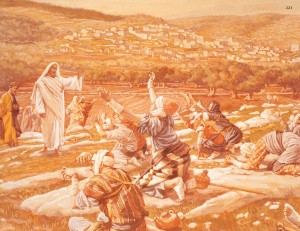In class as we were going through some of the chapters in Numbers I had several students ask about the casting out of the lepers in Numbers 5. Although not just lepers were “put out of the camp” (Numbers 5:2), this brought out the idea – what leprosy represented. Leprosy represented sin and all the pertains to it. To allow sin to stay in the camp could not be tolerated. This relates to youth in that we need to do all we can to stay above the influences of the world and to keep our lives free from sin.(See also: http://bit.ly/wd8T0n)
This reminded me of a quote by Frederick Farrar. Farrar mentioned that leprosy was a symbol for sin, but also that every time in the New Testament when an individual with leprosy approached the Savior and asked for cleansing, the Lord honored that request. I used this as an opportunity to testify to the youth that whenever they approach the Lord for forgiveness, the Savior will forgive. There is no sin that a youth will commit that cannot be repaired through the Atonement of Jesus Christ.
All Christ’s miracles are revelations also. Sometimes, when the circumstances of the case required it, He delayed His answer to a sufferer’s prayer. But we are never told that there was a moment’s pause when a leper cried to him. Leprosy was an acknowledged symbol of sin, and Christ would teach us that the heartfelt prayer of the sinner to be purged and cleansed is always met by instantaneous acceptance. Instantly stretching forth His hand, our Lord touched the leper, and he was cleansed. (Frederic Farrar, Life of Christ, p. 220.)
 I love this quote by Howard W. Hunter: “…whatever Jesus lays his hands upon lives. If Jesus lays his hands upon a marriage, it lives. If he is allowed to lay his hands on the family, it lives.” (Howard W. Hunter, “Reading the Scriptures,” Ensign, Nov 1979, p. 64 Located here: http://bit.ly/xC5JZW )
I love this quote by Howard W. Hunter: “…whatever Jesus lays his hands upon lives. If Jesus lays his hands upon a marriage, it lives. If he is allowed to lay his hands on the family, it lives.” (Howard W. Hunter, “Reading the Scriptures,” Ensign, Nov 1979, p. 64 Located here: http://bit.ly/xC5JZW )

